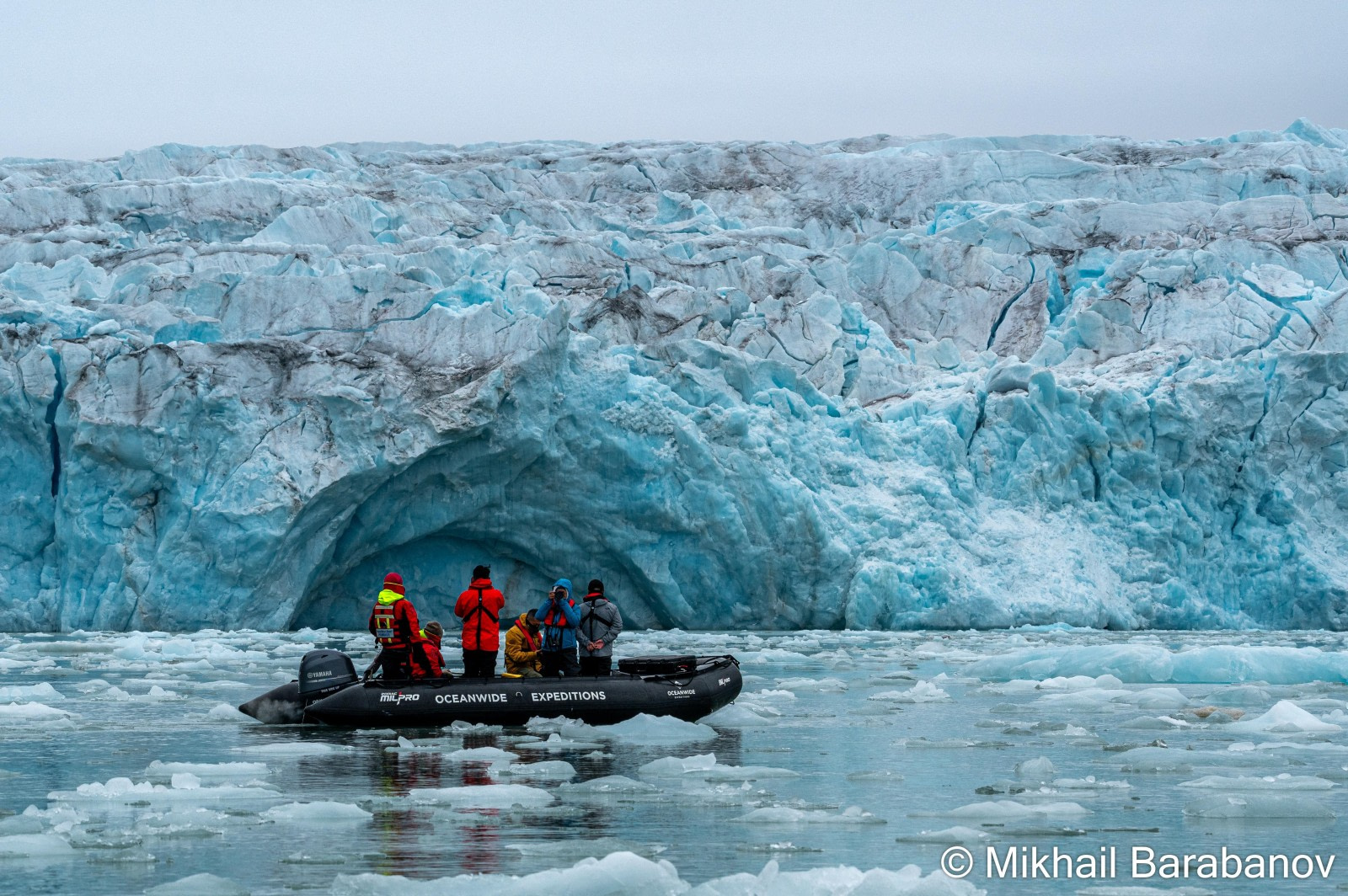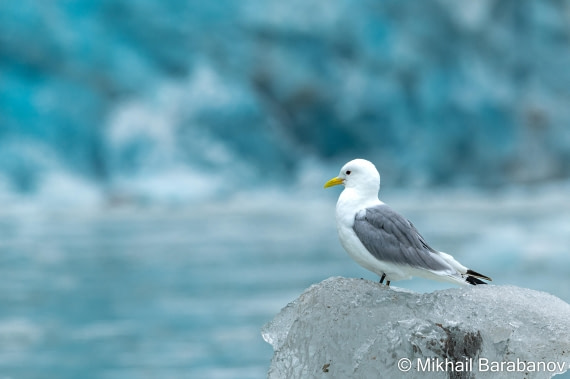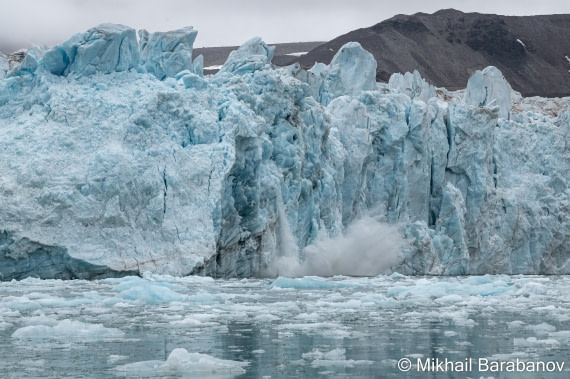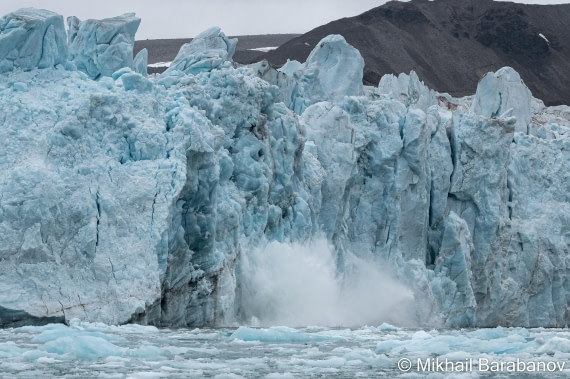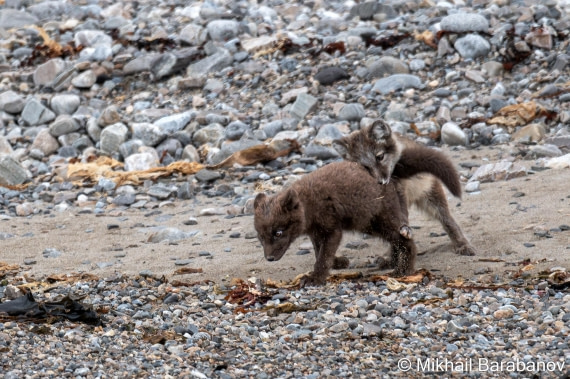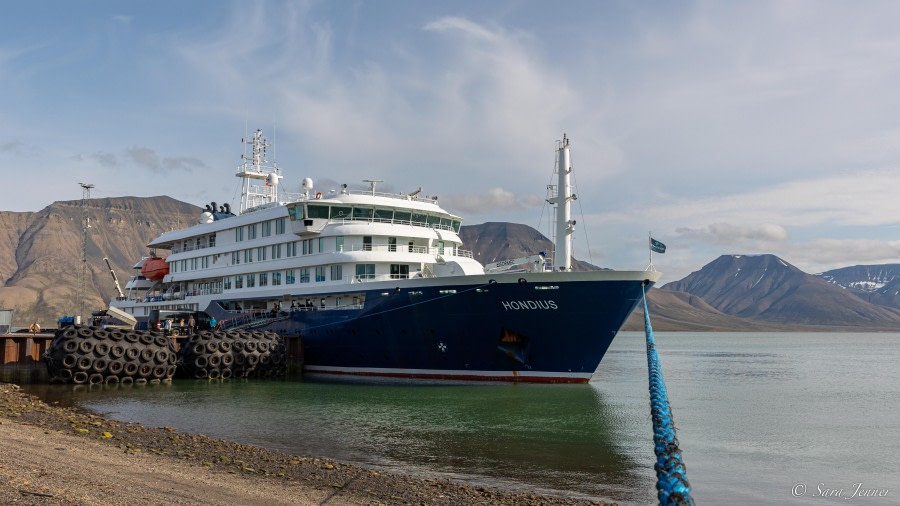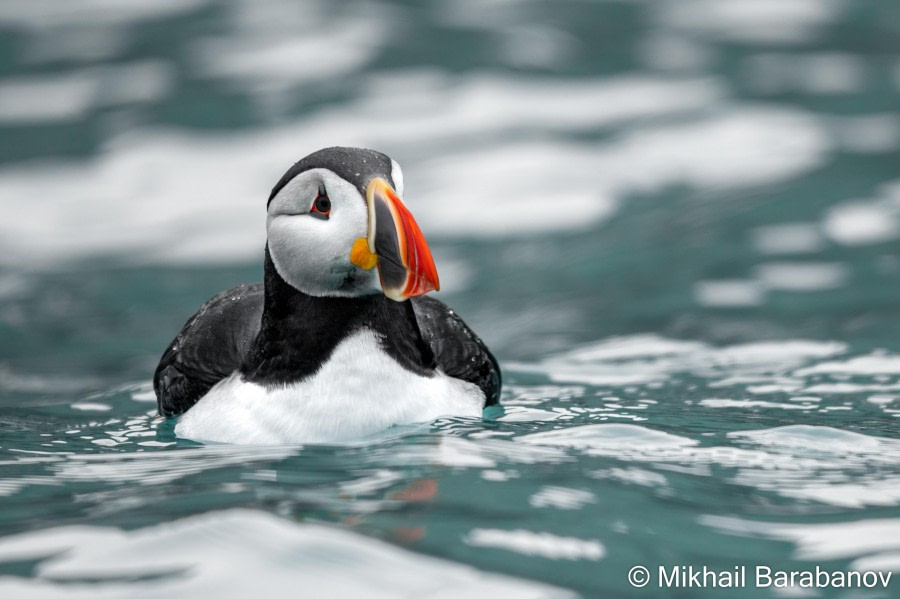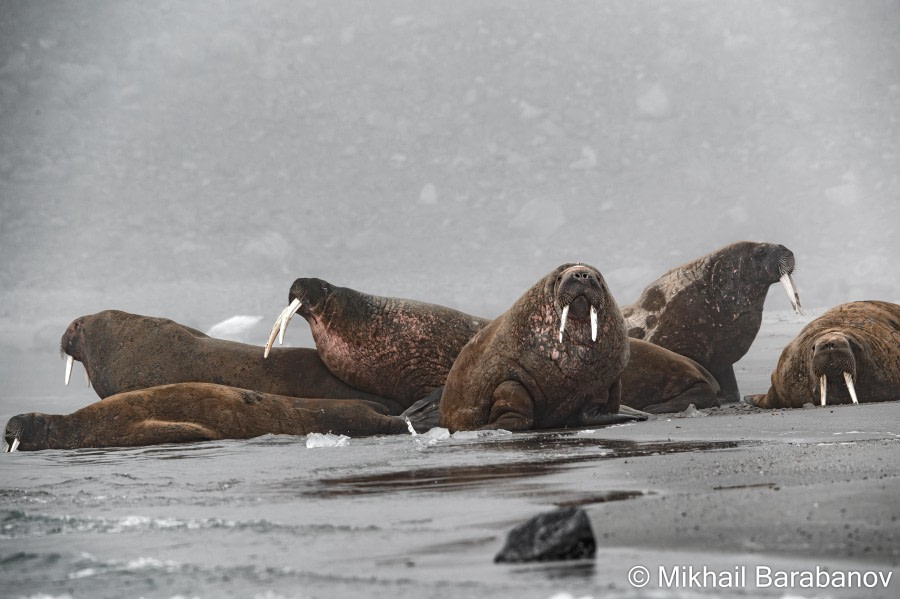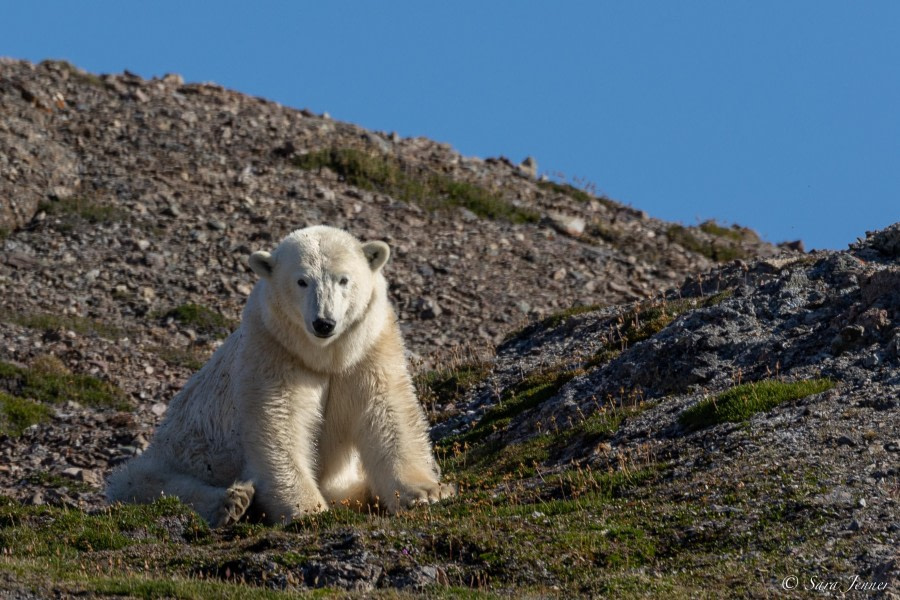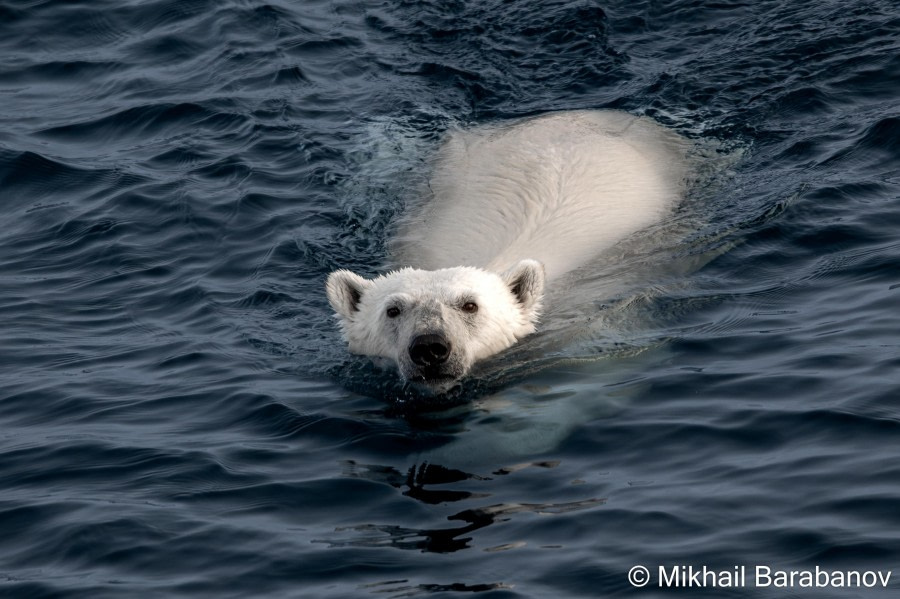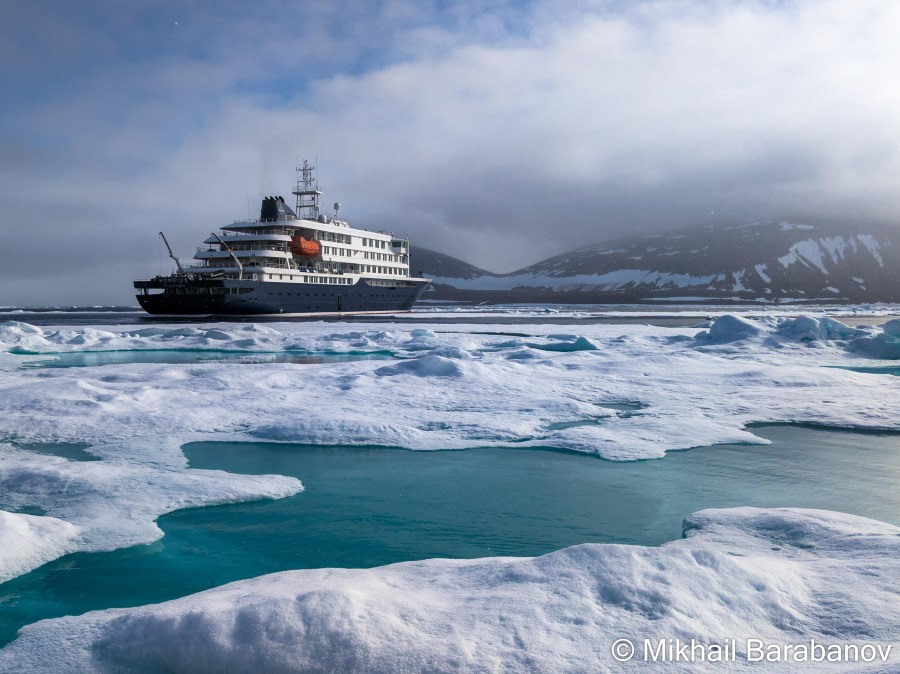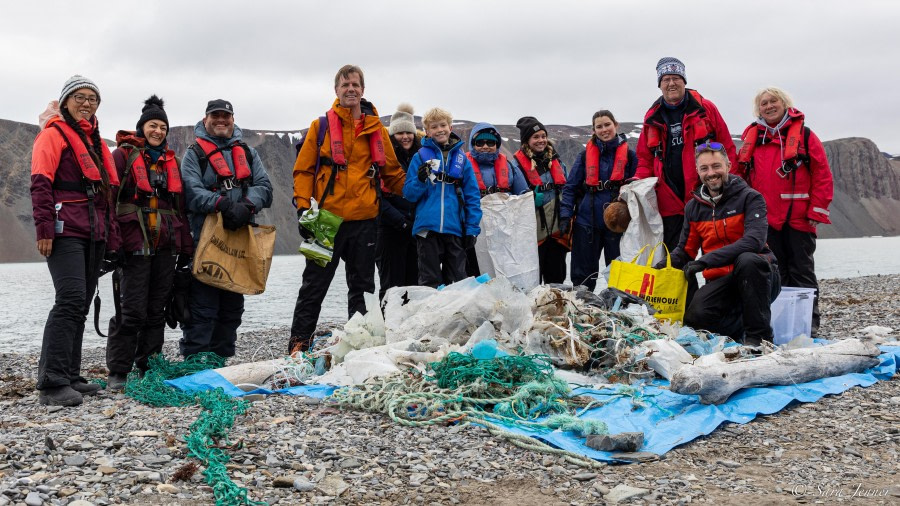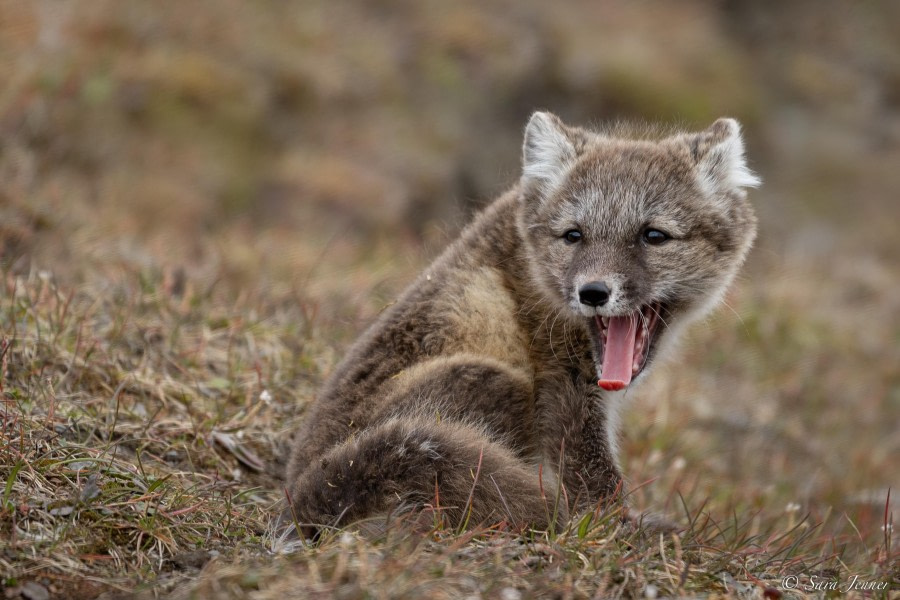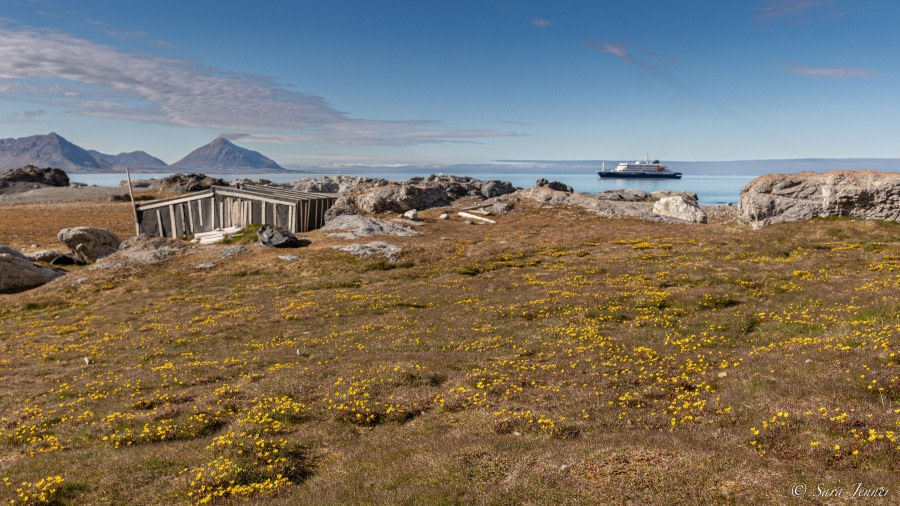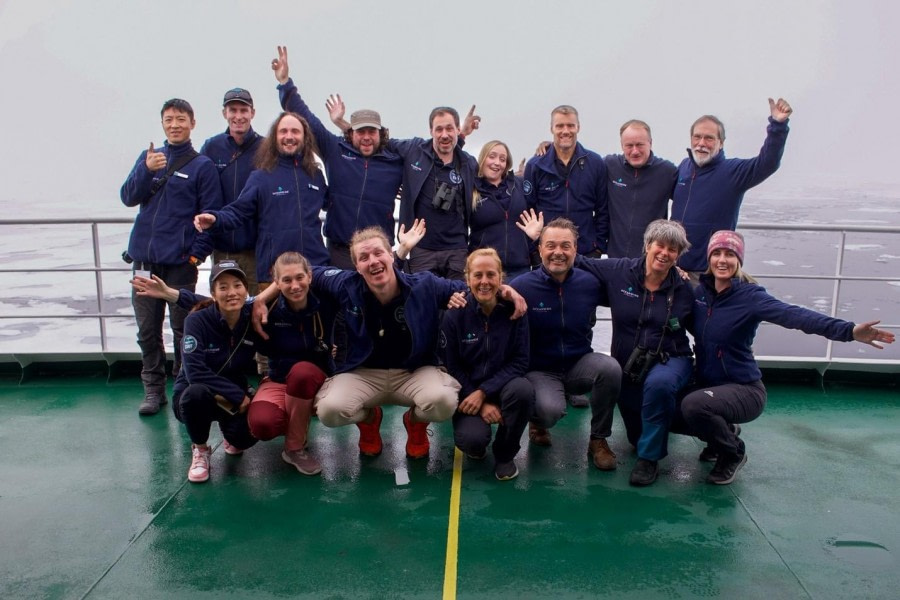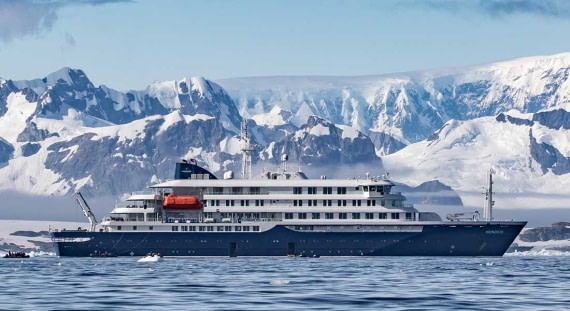| Date: |
30.07.2023 |
| Position: |
77°.09’2N / 020°55.4’E |
| Wind: |
SW 4 |
| Weather: |
Overcast |
| Air Temperature: |
+7 |
Early in the morning while we all slept, Hondius, sailed westward through the Freemansund strait, which separates the islands of Barentsøya and Edgeøya, towards Cape Doleritneset, also known as Kapp Lee, where, according to our plans, we were to make a landing on the shore.
Just like the previous day, precisely at 6:15, a melancholic and almost motherly warm "Good morning, good morning, good morning!" resonated from all the speakers hidden in the ceilings of our cabins, corridors, and other public spaces, performed by our beloved Sara. Almost simultaneously, the sound of the anchor chain echoed: the Hondius had arrived at its destination. Shortly after, the restaurant doors swung open, and we rushed to the buffet counter, filling our plates with omelettes, salads, fruits, and other calorie-laden delicacies. Ahead of us was a long and exciting day full of impressions and adventures.
The weather behaved capriciously, as if Spitsbergen, having gifted us a series of sunny and windless days, decided to delicately remind us that we were, after all, in the Arctic and not somewhere on the French Riviera. A fresh wind blew, and the waves were quite high compared to the previous days, making the Zodiac landing significantly more challenging than the day before. We had to hold onto the handrails and accept assistance from our guides who were piloting the Zodiacs. Bouncing on the waves, we sped towards the shore, where Sara and her assistants were already waiting to greet us.
Dolerittneset (Kapp Lee) is a unique place in every sense of the word. Firstly, it has a rich history, as one can still find remnants of Pomor hunting huts there. Brave Russian hunters once came here on small sailing boats and stayed for several months or even wintered, hunting walruses, belugas, and polar bears. Secondly, the dense tundra vegetation is particularly remarkable. It is not often seen in such northern latitudes. And thirdly, this stretch of the coast has long been favored by local giants – the Atlantic walruses – who have established their haul-out place here. We had already seen walruses before, but we had never been able to get close to them on land. What a sight it was!
Under the attentive guidance of our guides, we approached the walruses and lined up in a row to observe these enormous creatures for about twenty minutes. Most of the walruses were peacefully asleep, but some lifted their heads, looked around, moved back and forth, slowly and clumsily shifting their weight from one flipper to another, and even playfully seemed to nudge each other with their long, sharp tusks. We hoped it was all in good humour.
Afterward, upon returning to the landing site, we boarded the Zodiacs and set off on a small water journey to get a view of the walrus rookery from the water and hopefully spot other wildlife. Every now and then, small groups of walruses would surface around us, snorting loudly as they exhaled air before submerging again. It was astonishing to see how graceful and elegant they appeared in the water. It seemed even stranger to witness their sleeping counterparts ashore, resembling sacks of potatoes.
Suddenly, a loud cry pierced the radio waves: "Angel! I've caught an angel! I have an angel!!" It was Chloe, our guide. Chloe is a marine biologist specializing in plankton research. She had managed to capture a creature called a Sea Angel in a specialized net, and she was ecstatic about it. Her excitement was contagious, and we all shared her joy. We took turns approaching her, asking to see the "angel," and in response, she eagerly showed us her catch, a wing-flapping organism, placed in a glass.
As our time ran out, once again bouncing on the waves and showered with a fireworks display of salty sea spray, we headed back towards our ship. While we had our lunch, Hondius set course back to Freemansund, to our post-lunch landing spot - Kapp Waldburg. It was a very interesting landing site, but according to our guides, it's not always possible to make a landing there. Weather conditions might not permit it, or a polar bear could be wandering along the shore.
However, believe it or not, we succeeded this time! Our guides skilfully maneuverer their Zodiacs bac k and forth between the shore and the ship and quickly ferried all of us to the beach. The planned walk wasn't meant to be a long one, nor was it necessary. The main attraction was the bird cliff. Over thousands of years, a stream running down the slope had carved a true canyon with vertical walls. This was the chosen nesting ground for black-legged kittiwakes. Hundreds and hundreds of birds had built their nests there and were raising their chicks. We could get very close to them, but we still maintained a respectful distance. The cacophony of calls was simply deafening. We settled on the slope and simply observed the everyday life of these hardworking feathered creatures.
Indeed, there's a golden rule: where there's a bird cliff, there's bound to be a burrow where Arctic foxes reside. And that was the case here. Small and audacious creatures darted back and forth, getting tangled at our feet, and kept catching hapless birds. They would then scurry off to hide their lifeless bodies in a secluded spot to dig them up and eat them during the winter.
It was time to return to the ship. The Zodiacs were ready! Swiftly cutting through the waves, they shuttled us back to the vessel under the rays of the low Arctic sun. As soon as the last of us returned onboard, Hondius set a course to the south. We had nearly two hundred nautical miles to cover! It was a wonderful day filled with unforgettable experiences!
